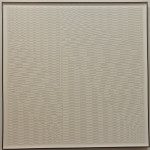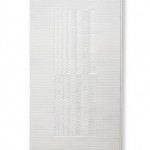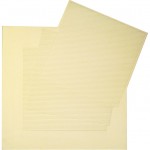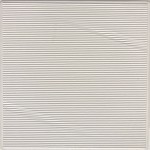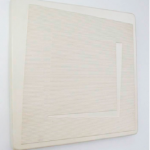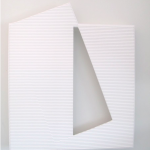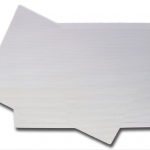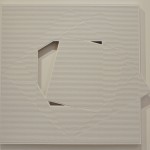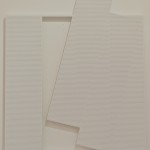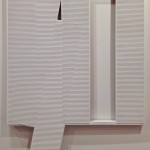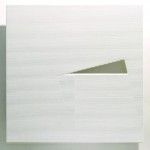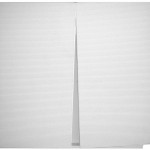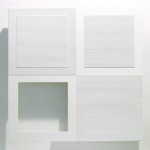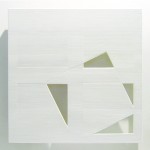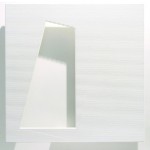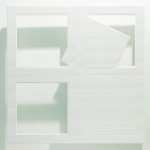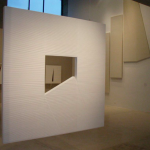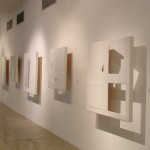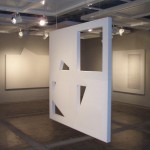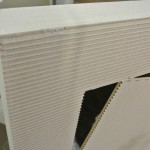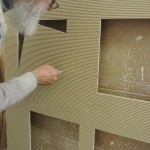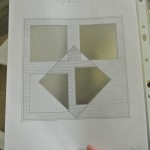Project Description
Francisco Salazar
Born in 1937. Quiriquire, Monagas, Venezuela.
“For an artwork to be abstract, it must incorporate the principles of construction. Real materials in real space have spatial design. Abstract art opens a new era regarding the use of materials, the matter being itself a source of technical novelty.” F.S.
Amongst the mid century Venezuelan painters, Francisco Salazar has being affirmed has one of the most important contributors to the abstract-geometric movement.
He entered the School of Fine and Applied Arts “Cristóbal Rojas” in Caracas, where he took courses in drawing, painting, sculpture, mural, stained glass and etching, among others. His teachers were Alejandro Otero, Ramón Vásquez Brito, Carlos González and Mateo Manaure Bogen; Francisco Narvaez was the director.
Since the 1950s, Francisco Salazar has created a body of work composed entirely of monochromatic white works on cardboard. Despite the inherent simplicity of these works, Salazar has accomplished an astounding sense of variation within these pre-ordained parameters. He has relinquished gesture and color to allow his works an autonomy that characterizes their effect. Essentially, it is a work that systematically arranges light and shadow. It is perpetually animated by the play of light and the infinite variations of the space surrounding it.
In 1967, Salazar had his first Solo exhibition at the Museum of Fine Arts in Caracas, Venezuela. In the catalog , Miguel Arroyo , director of the MBA , wrote that Salazar “moves within the kinetic and retinal: Kinetic – his work – because any change of light or any change in point of view of the viewer subtly alters relationships established; and thus a same picture becomes a chain of visual events. And is retinal, because it can and does happen frequently, which is white which completely covers their work but becomes stained in certain areas of a virtual coloring produced by light or by fatigue that continued stimulation occurs in our visual receptors. “
Throughout his career, he has maintained a methodical, rigorous and selective behavior in both formal approaches and the choice of materials and the nomenclature of his compositions. This has allowed his to this deepen, without elaboration, in matters within its interest such as the phenomenology of perception, spatial relationships and the participation of the viewer. Registered in the abstract-constructivist, nearby streams to the kinetic aspect of the sixties, his work reaches a refined aestheticism that associates his work to other movements that relate with the extreme reduction of the expressive elements. This search for the essential aspects seems to be in parallel with advances in modern physics, poring discipline to reveal the primary structures of reality.
For more information on Francisco Salazar Click Here
- Positive – Negative, 1966 140 x 140 cm Acrylic on corrugated cardboard
- Positif-Negatif No 158 , 1973 corrugated cardboard, wood and oil paint, 145.73 x 80.01 x 7.3 cm
- Déplacement de trois élément, No 515, 1976 Oil and corrugated cardboard on canvas, 70 x 74 cm
- Modulation #502, 1976 50×50 Acrylic on corrugated cardboard
- Dyptic Blanc No 431, 1976 Corrugated cardboard, wood and acrylic paint, 69cm x 69cm x 6cm
- No 552, 1977 Oil on Corrugated Cardboardpaint100cm x 150cm x 7cm
- No 552, 1977 Oil on Corrugated Cardboard 100cm x 150cm x 7cm
- L’element immateriel dans l’espace, 1987 100 x 100 cm Acrylic on corrugated cardboard
- L’espace est trasparent, 1987 100 x 100 cmAcrylic on corrugated cardboard
- Deplacment de deux elements immateriel et un espace vide #712, 1987 123 x 100 cm Acrylic on corrugated cardboard
- No 835/1994, 2002 Corrugated cardboard, wood and acrylic paint, 100cm x 100cm x 6cm Museo de Arte Acarigua-Araure
- Ouverture du vide No 815, 2002 Corrugated cardboard, wood and acrylic paint, 100cm x 100cm x 6cm
- No 816/1987, 2002 Corrugated cardboard, wood and acrylic paint, 100cm x 100cm x 6cm
- No 825/1989, 2004 Corrugated cardboard, wood and acrylic paint, 100cm x 100cm x 6cm
- No 823/1982, 2004 Corrugated cardboard, wood and acrylic paint, 100cm x 100cm x 6cm
- No 827/1984, 2005 Corrugated cardboard, wood and acrylic paint, 100cm x 100cm x 6cm
- Sala Mendoza, 2008
- Sala Mendoza, 2008
- Sala Mendoza, 2008
- Detail, work in progress
- Detail, work in progress
- Sketch

